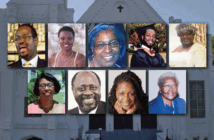Ann Michel of the Lewis Center staff says that unanimity is not required for a group to move forward. Good leaders drive consensus by extracting different opinions and views, listening carefully for threads of agreement, and then clarifying a way forward.
We’ve all been in church groups that meet regularly but never seem to get anything done. Groups that discuss a problem to death but can’t decide how to move forward. Groups in which one contrarian voice always stands in the way of progress. And groups that always leave their meeting rooms with the right hand not knowing what the left hand is doing.
Well-functioning ministry teams make difficult decisions and then make sure those decisions are put into action. This requires consensus. Yet the means of forging a meaningful consensus are often poorly understood — in part because they can be quite subtle or even invisible when properly exercised. The leaders of well-functioning groups understand the true nature of consensus and how to achieve it.
Consensus does not require unanimity.
A lot of church groups seek to make decisions by consensus rather than relying on a key leader to make the decisions or doing everything by vote. This laudatory objective is consistent with a culture of participatory decision making. But groups trying to operate by consensus often make the mistake of thinking it requires unanimity. They end up paralyzed and unable to move forward because they are waiting for everyone to be in total agreement. They in essence give veto power to any single individual who holds a dissenting opinion.
Moving forward in a constructive way does not require unanimity. Consensus does not mean that everyone agrees with a decision. It means the people have given their “consent” to a decision moving forward. People with differing views will consent to a group’s decision, even if they don’t agree with it, as long as they feel their ideas were heard, understood, and considered within an environment of trust and respect. Good leaders drive consensus by extracting all opinions, ideas, and views and then having the courage to move a group forward.
Meaningful engagement is key.
Often, a team leader will try to control the outcome and avoid conflict by keeping a tight lid on the conversation. But this approach is, in fact, counterproductive. Those who have not engaged actively in discussion and decision making are less committed to the outcome, so any consensus achieved is likely to be shallow and fragile. So, the secret to engendering a meaningful consensus begins with an active, engaging group process that maximizes the input of every participant.
You might think encouraging debate and even disagreement would lead to dissension but, in fact, the opposite is true. If someone feels they’ve had the opportunity to express themselves and be heard, they become more committed to the group’s decision making and will go along with the decision even if the group ultimately goes in a different direction. Commitment is actually born of this kind of constructive engagement.
Techniques for discerning consensus
How then does a group move from this type of open, participatory discussion to decision, consensus, and action? These strategies can help.
- Listen for threads of agreement. Leaders must really listen to the drift of the conversation and be attentive to threads of agreement that appear to be emerging. It can be helpful at key junctures to simply stop and name where you hear commonalities or where you see agreement taking shape.
- Get a read of where the group stands. If you’re not sure where things stand, a quick nonbinding straw poll can allow everyone to get a sense of the group. Simply say “Let’s have a quick show of hands. How many people favor this approach?” In a small group this can also be accomplished by simply circling around the table and asking people what they think should be done. When I employ these techniques, I am generally surprised to find that there is more consensus than I think, perhaps because debate tends to center around objections, even if they aren’t held by the majority present.
- Talk one-on-one offline. Sometimes there’s an elephant in the room and it keeps people from airing their true feelings. This can make it nearly impossible to extract a consensus while sitting around the table as a group. When dealing with a particularly sensitive or controversial subject, talking with group members one-on-one offline can help a leader understand their true sentiments and test out potential outcomes.
- Make room for the Spirit. Simply pausing for prayer when a group gets stymied or off track can get a group moving in the right direction again.
State the consensus clearly.
How many times have you come to the end of a discussion and had different people leave the meeting with totally different understandings about what was decided? A meaningful consensus requires that a team avoid assumptions and ambiguity. So, once you’ve driven a consensus in the manner a described above, it’s important to name explicitly what has been decided. This is so simple that it sounds obvious, but you should never leave a meeting without stating clearly what has been agreed to. Stating your consensus clearly gives you a running start the next time the group meets, and it provides an accountability measure for assuring that what has been decided actually gets done.
Related Resources
- Synergy: A Leadership Guide for Church Staff and Volunteers (Abingdon Press, 2017) by Ann A. Michel.
- 3 Ways to Lead More Collaboratively by Justin A. Irving and Mark L. Strauss
- 5 Disciplines of Teams that Thrive by Ryan T. Hartwig and Warren Bird






